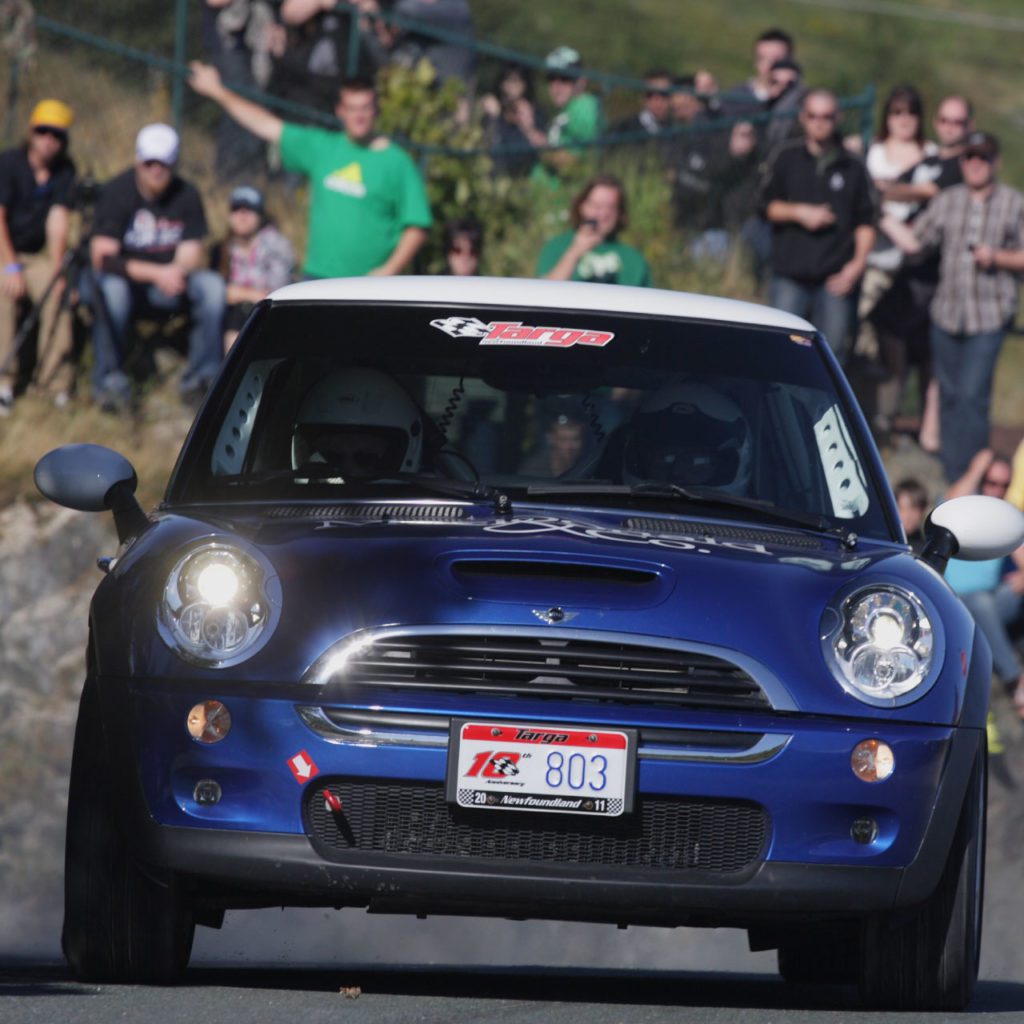Just completing Targa Newfoundland is an accomplishment. Whether you are entered in the competitive Targa 1 or 2 divisions, Grand Touring or non-competitive Targa Fast Tour, thorough preparation is essential regardless of your chosen class.
For your first Targa, focus on finishing the event and learning for future events, all while embracing the experience and having a great time doing it.

1: Suspension/Shocks/Tires
Suspension
Maintain a stock suspension setup to tackle the diverse range of road conditions during Targa. This is a tarmac rally complete with occasional potholes. Your suspension will need to cope with these challenges.
Shocks
Ensure you have quality shocks with full rebound. Stock shocks will suffice, but investing in new ones is a smart choice. If your shocks are adjustable, avoid setting them to the hardest setting. The demanding normal roads require significant suspension travel at higher speeds. Think about bringing a spare set of shocks as a precautionary measure.
Tires
The key to a well-performing suspension lies in your choice of tires. They are your sole connection to the road, so opt for full-tread tires with a decent sidewall with a minimum profile or aspect ratio of 40%. While it may sound simple, many participants often splurge on extra horsepower that fails to translate effectively to the road. Remember, increased horsepower often translates to decreased reliability.
2: Vehicle Prep
Ride Height
When it comes to Targa Newfoundland, ride height is crucial. Springs, shocks, wheels, and tires all play a role. Make sure your car has adequate ride height for normal roads because that’s where the competition takes place. Higher ride height helps clear bumps, but it also raises the car’s center of gravity and affects cornering. Consider these factors while preparing your car for Targa.
Springs
For optimal performance, we recommend using slightly stiffer springs than stock, while maintaining a standard ride height.
Shocks
Pair your springs with shocks that have stiff compression and soft rebound. This combination will keep your wheels connected to the road. There are adjustable shocks available, so consult with dealers while keeping the basic conditions in mind.
Wheels
Wheels are crucial for keeping your car firmly planted on the road. Although bigger wheels offer better resistance against potholes and bumps, they also add unsprung weight, negatively impacting handling. Opt for slightly wider wheels than the standard width, and consider a larger diameter for improved performance.
Tires
Tires are your connection to the road and must not be overlooked. Choose tires with good drainage capabilities to shed water effectively. Avoid excessively wide tires as they tend to aquaplane. Select tires with a good wear rate, as worn-out tires are rarely an issue during the event. Maintain an aspect ratio of at least 40 for that necessary sidewall cushioning against road bumps.
3: Brakes, Pads and Brake Fluids
If there is a potential Achilles heel to a Targa-prepared car, it’s the brakes. The most consistently overlooked part of car preparation and servicing has been the vehicle’s braking system. Here are a few tips that will help you get ready. They are simple and straightforward, but they are crucial for ensuring your safety.
Firstly, let’s talk about the brakes. You don’t necessarily need to upgrade to high-class, expensive calipers. While they can enhance competition performance, they are not essential unless you’re aiming for that level. Remember, peace of mind is of utmost importance!
We recommend fully servicing your standard calipers and replacing the standard lines with Aeroquip or other braided brake lines that connect the solid tubular lines on the chassis to the actual brake calipers. Why? Well, you have no idea if any damage has been incurred while driving the car on the road. While performing this upgrade, it is the perfect time to flush out the old brake fluid and replace it with a high-temperature competition-rated fluid such as DOT 4.
During this process, it is also important to check your rotors and pads. New rotors, including drilled ones, are readily available and reasonably priced in most cases.
For the pads, choose a medium competition-rated pad, but avoid fully hard pads as they are challenging to reach and maintain the proper operating temperature. Plan on changing the pads frequently, so it’s advisable to have three or four sets (especially for the front) in your supply box.
When it comes to temperatures, remember that rain and chilly weather are common during Targa, as it is an autumn event. Although the weather can be very hot at times, it usually remains pleasantly cool, with at least a couple of wet or drizzly days. Additionally, some stages feature long runs, allowing the brakes to cool below their optimal operating temperature.
Lastly, pay strict attention to your brakes (I’m sure we don’t need to explain why). Check the disc and pad wear every evening. Yes, you’ll need to remove the wheels and conduct a thorough visual inspection for wear or damage, such as pad issues, cracked rotors, or calipers. If you have any doubts, seek out a brake professional from one of the teams and ask them to take a look. In almost all cases, they will be delighted to assist you. Consistently following this practice will save you a significant amount of time and anxiety.
4: Seats, Seating, Position and Safety Belts
Comfort and support in your seats are crucial in motorsport. Having a good seating position and a comfortable seat is vital to avoid exhaustion. It’s common for competitors to invest heavily in performance upgrades while neglecting their seats. However, seats play a significant role in combating fatigue. Here are some basic tips to consider:
Seats:
• If your stock seats aren’t suitable, look for “used” Subaru WRX/STI seats as a starting point.
• If you opt for race seats, choose ones that fit both you and your navigator. There are various options available, prioritizing safety, protection, and comfort.
• For serious competition, invest in strong, well-built seats that offer a comfortable fit. Many options exist in the market.
• Consider “wing” seats that provide good head protection against side impacts. Keep in mind that they may limit side vision, so rely on side mirrors.
• Ensure the seats are adjustable, especially if you’ll be sharing driving duties with a co-driver.
• Properly anchor the seats to the vehicle’s floor pan using sturdy adjustment racks.
Seating Positions:
• The driver’s seat should be positioned an arm’s length back from the top of the steering wheel. With power steering, this position allows for reasonable effort. Make sure the pedals are within reach, and you have full travel access.
• The co-driver’s seat should be set farther back and lower while maintaining good visibility and foot support.
Belts:
• If you’re driving a car without a roll cage, use standard belts. They have been thoroughly tested and are suitable for Targa Tour, Grand Touring, and Targa 1 events.
• If your car has a roll cage or you’re using racing seats, opt for full competition belts. There are various choices available, so choose wisely.
• As the stages and competition progress throughout the day, it’s essential to constantly tighten your belts at the start of each stage.
• The stage operations crew will ask you to check your belts at the beginning of each stage. Please follow their instructions.
Remember, ensuring your comfort and safety through proper seating and belts is crucial in Motorsport competitions.
By paying attention to these crucial components, you’ll elevate your chances of success and minimize concerns about drivetrain reliability. Remember, these tips serve as a starting point for your preparations.
